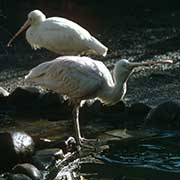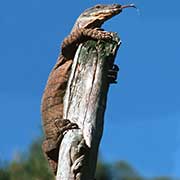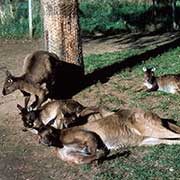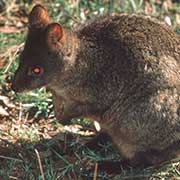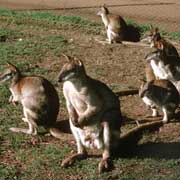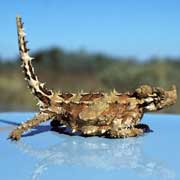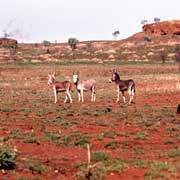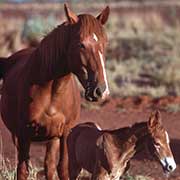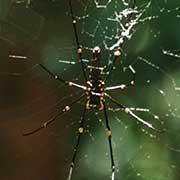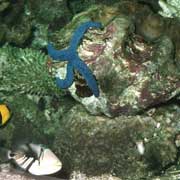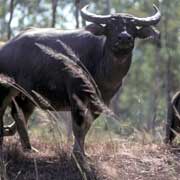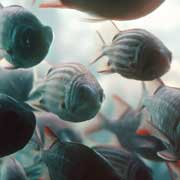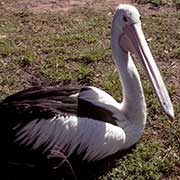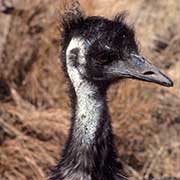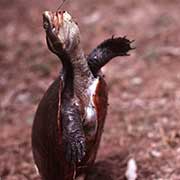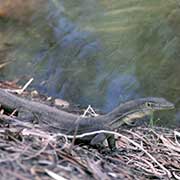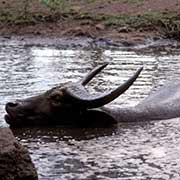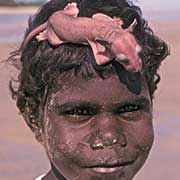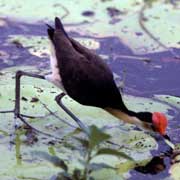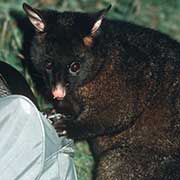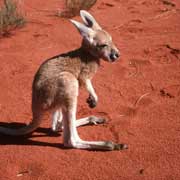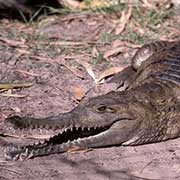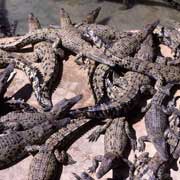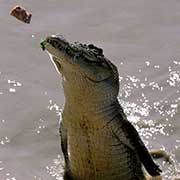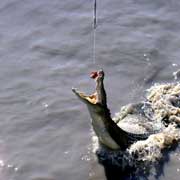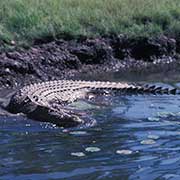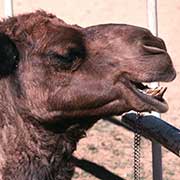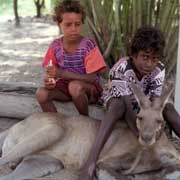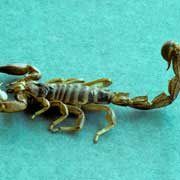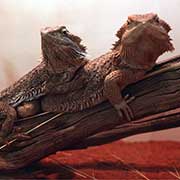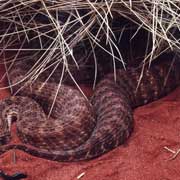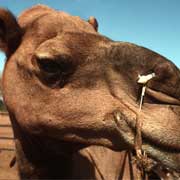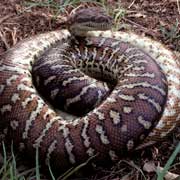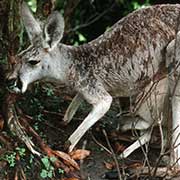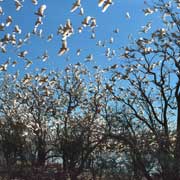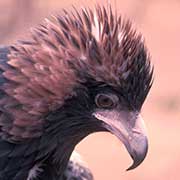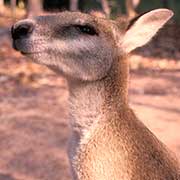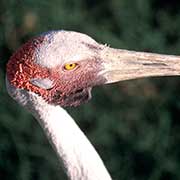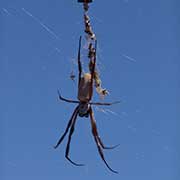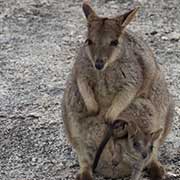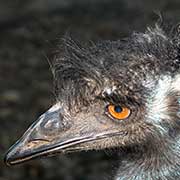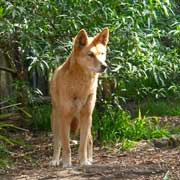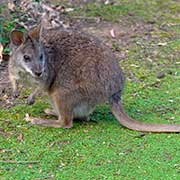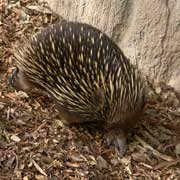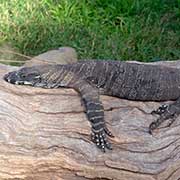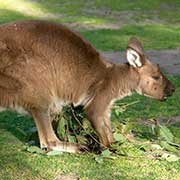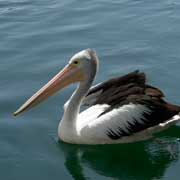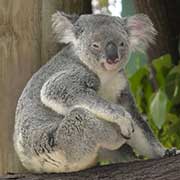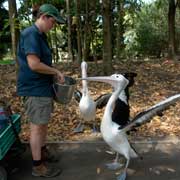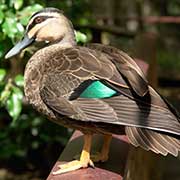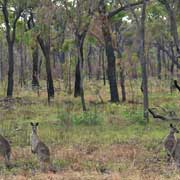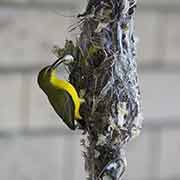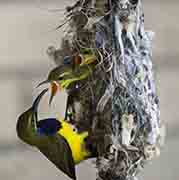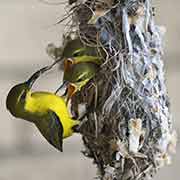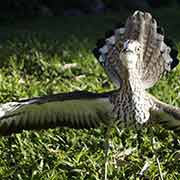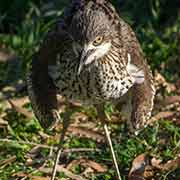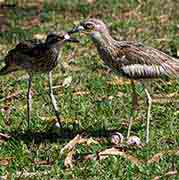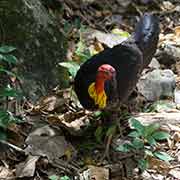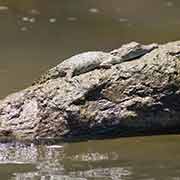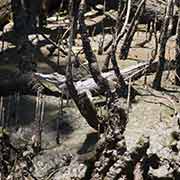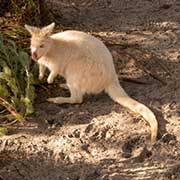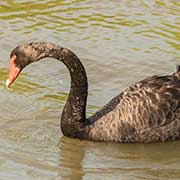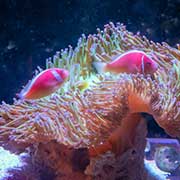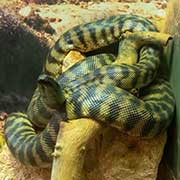Photos of Wild animals of Outback Australia
Wild animals of Outback Australia
Outback Australia is a wonderland of wildlife, most of it harmless and quite loveable, with a few notable exceptions! Best known of course are kangaroos and wallabies, Australia's marsupials who keep their young in a pouch. The Koala, a tree dwelling marsupial (and not a bear!) lives in the temperate regions and spends all its life in eucalyptus trees, munching its leaves. It seems cuddly, but isn't really; if annoyed it may give you a nasty scratch. The large kangaroo too, can be quite a fighter when cornered. The possum is a nocturnal marsupial and widespread around Australia. Unique to Australia and parts of New Guinea are the monotreme or egg-laying mammals like the platypus and echidna.
you may then send it as a postcard if you wish.
There are large flightless bird, like the cassowary and the emu; the latter emits a weird rumbling sound and is capable of running very fast. In the wetlands in the north are pelicans, brolgas, flocks of white cockatoos and the “Jesus Bird”, so called because it seems to walk on water (but really, of course, on water lily pads).
There are many types of reptiles: the Goanna (Monitor lizard) is very important in Aboriginal mythology and as food, many types of snakes: the Carpet Snake, a python, is non-poisonous but there are many that are: the Desert Death Adder lives up to its name as one of the most poisonous on earth. There are other animals that are best avoided and probably the Estuarine or Saltwater Crocodile has the worst reputation: in Darwin museum is the huge skeleton of “Sweetheart”, a monster crocodile that used to attack motor boats. But these large reptiles, once mercilessly hunted, are now protected and should be respected as belonging there. They are now regularly caught in Darwin harbour and released in the wild, or end up in the crocodile farm. They are also a tourist attraction: from the boat “Adelaide River Queen” they are fed meat and have to jump for it, to the delight of tourists. The Freshwater or Johnson Crocodile, in contrast, is quite harmless.
When the whites started to explore the vast interior, they introduced camels, complete with Afghan camel drivers, in the late 19th century. Later released, these camels now form large herds in the Centre and are used in tourist safaris. They are becoming a problem in that their numbers in some places are too large and a burden on the environment. Donkeys are sometimes seen in remote regions too, as are horses and especially domestic cats gone wild, considered the worst pest in the bush as they tend to kill large amounts of native marsupials and birds. The water buffalo, once introduced from Indonesia, is now considered a pest as it degrades the environment; brought under control and herded into cattle pens, they now appear on the menu in Darwin restaurants.
And don't forget the teeming wildlife of our coasts, especially Queensland's Great Barrier Reef, considered the largest living structure in the world. Birds of many kinds can be found in urban Cairns and wildlife sanctuaries like in Port Douglas; and Northern Queensland's Daintree River National Park is unique in that respect too.




